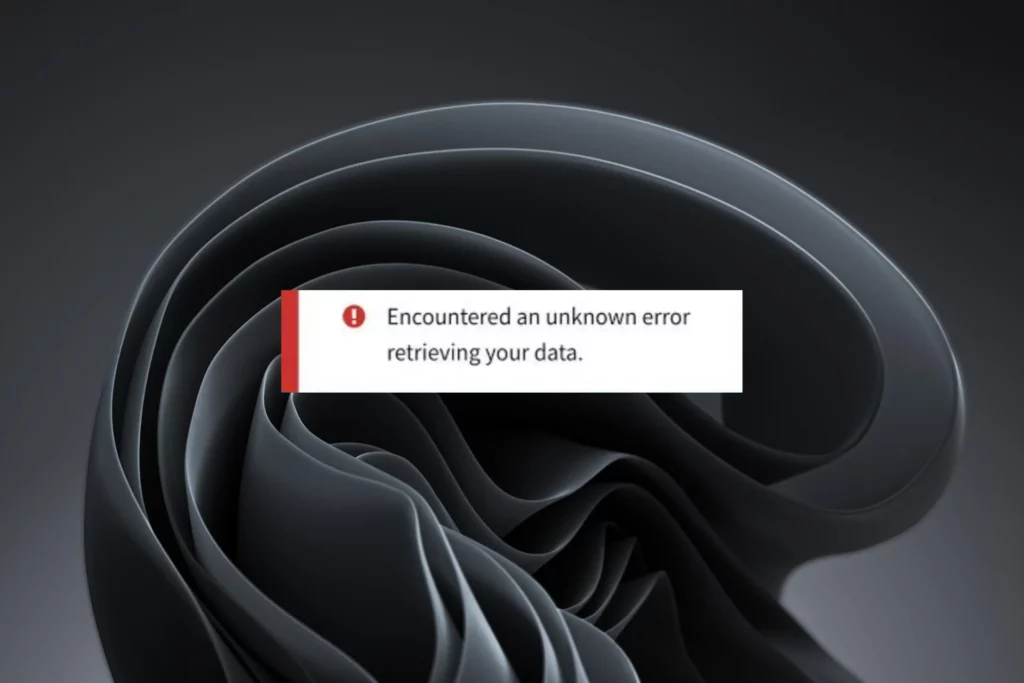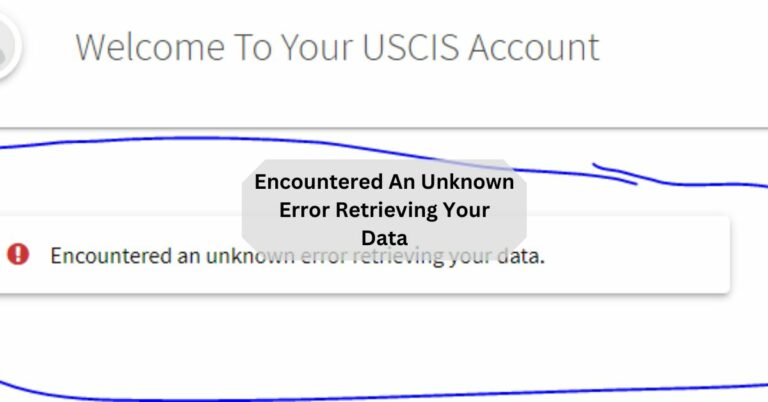Encountering an unknown error while retrieving data is a common yet frustrating experience for individuals and organizations alike.
Encountering an unknown error retrieving data can disrupt workflows and necessitates immediate investigation to prevent further interruptions.
This article aims to delve into the causes, impacts, and solutions to such errors to ensure smooth data operations.
Common Causes Of Data Retrieval Errors:
1. Software Bugs And Glitches:
- Software bugs can manifest in various forms, from minor glitches to system-wide crashes, disrupting data retrieval processes.
- These errors often require software developers to debug and patch the underlying issues and restore normal functionality.
2. Network Issues:
- Network issues such as latency, packet loss, or network congestion can impede the smooth retrieval of data, leading to delays or failures.
- Troubleshooting network problems involves diagnosing hardware, software, or configuration issues to ensure stable and reliable connectivity.
3. Data Corruption:

- Data corruption can occur due to various factors, including hardware failures, software errors, or malicious attacks, rendering data inaccessible or unusable.
- Preventive measures such as regular data backups, integrity checks, and robust security protocols are crucial to mitigate the risks associated with data corruption.
4. Insufficient Permissions:
- Insufficient permissions restrict access to data, causing retrieval errors when users or applications attempt to access resources beyond their authorized privileges.
- Properly configuring access control mechanisms, such as role-based access control (RBAC) or access control lists (ACLs), can help enforce security policies and prevent unauthorized access.
Read: Bertėjas: A Breakthrough In Language Translation Technology
Impact Of Data Retrieval Errors:
1. Delayed Operations:
- Data retrieval errors often result in delays in accessing critical information, slowing down business processes and decision-making.
- These delays can have cascading effects on project timelines, customer service, and overall operational efficiency.
2. Loss Of Productivity:
- When data retrieval errors occur frequently or persistently, they can disrupt workflows and lead to significant losses in productivity.
- Employees may spend valuable time troubleshooting errors instead of focusing on core tasks, affecting overall output and performance.
3. Data Integrity Issues:
- Data retrieval errors can compromise the integrity of information, leading to inaccuracies or inconsistencies in databases and reports.
- Incorrect or incomplete data retrieved due to errors can result in flawed analyses, faulty decisions, and reputational damage.
4. Customer Dissatisfaction:
- Data retrieval errors can impact customer experiences, causing frustration and dissatisfaction when users encounter issues accessing services or information.
- Poorly handled errors may erode customer trust and loyalty, leading to negative reviews, churn, and damage to brand reputation.
Troubleshooting Steps To Resolve “Encountered An Unknown Error Retrieving Your Data”:
1. Check Network Connectivity:
Ensure proper connectivity by verifying network connections. Test the connection by pinging servers or accessing other network resources to identify potential issues like network congestion or hardware failures.
2. Verify Data Integrity:

Cross-reference retrieved data with backups or compare checksums to detect discrepancies. Use data validation tools to ensure data integrity. Investigate and promptly address the root causes of any integrity issues.
3. Review Error Logs:
Analyze error logs to identify related error messages or warning signs. Look for patterns indicating software bugs or configuration errors. Utilize log analysis tools to facilitate identification and resolution of data retrieval errors.
4. Update Software And Drivers:
Regularly update software applications, database systems, and device drivers. Check for known bugs or compatibility issues addressed in newer versions—schedule maintenance activities to prevent errors caused by outdated software.
Preventive Measures:
1. Regular System Maintenance:
Regularly schedule system maintenance to ensure hardware and software components are operating optimally.
This includes applying updates, patches, and performance optimizations to prevent potential issues that may lead to data retrieval errors.
2. Perform Security Audits:
Conduct periodic security audits to identify and address vulnerabilities in systems and networks.
By proactively addressing security weaknesses, organizations can reduce the risk of security breaches that could compromise data integrity and lead to retrieval errors.
Read: Lynlee Madrid: A Pioneer In Western Fashion And Mental Health Advocacy
3. Training Staff On Error Resolution Procedures:
Provide comprehensive training to staff members on error resolution procedures. Ensure they have the knowledge and skills to identify and troubleshoot data retrieval errors quickly.
Empowering staff to address issues promptly can minimize downtime and mitigate potential impacts on operations.
4. Utilize Automated Monitoring Tools:

Implement automated monitoring tools to continuously track real-time network performance, system health, and data integrity.
These tools can detect anomalies and potential issues early, allowing IT teams to intervene swiftly and resolve problems before they escalate into data retrieval errors.
The Role Of It Support:
Responsive IT support teams are crucial in swiftly resolving data retrieval errors. By providing timely assistance and implementing efficient error resolution strategies, they contribute to minimizing downtime and ensuring smooth data operations.
Conclusion:
In conclusion, encountering an unknown error while retrieving data is a challenge that organizations must proactively address. They can effectively manage and mitigate the associated risks by understanding the causes, impacts, and solutions to such errors.
Related Questions:
1. How Common Are Data Retrieval Errors?
Data retrieval errors are relatively common due to various technical and operational factors.
2. Can Data Retrieval Errors Be Prevented Entirely?
While it’s challenging to eliminate data retrieval errors, proactive measures can significantly reduce their occurrence and impact.
3. What Role Does Network Connectivity Play In Data Retrieval Errors?
Network issues such as interruptions or slowdowns can impede data retrieval, leading to errors.
4. Why Is It Essential To Have Robust Error Handling Mechanisms In Place?
Robust error handling mechanisms ensure that when errors occur, they are promptly identified and resolved, minimizing disruption to operations.
5. How Can Organizations Improve Their Response To Data Retrieval Errors?
Organizations can enhance their response to data retrieval errors by investing in training, technology, and proactive maintenance measures.
Read:
